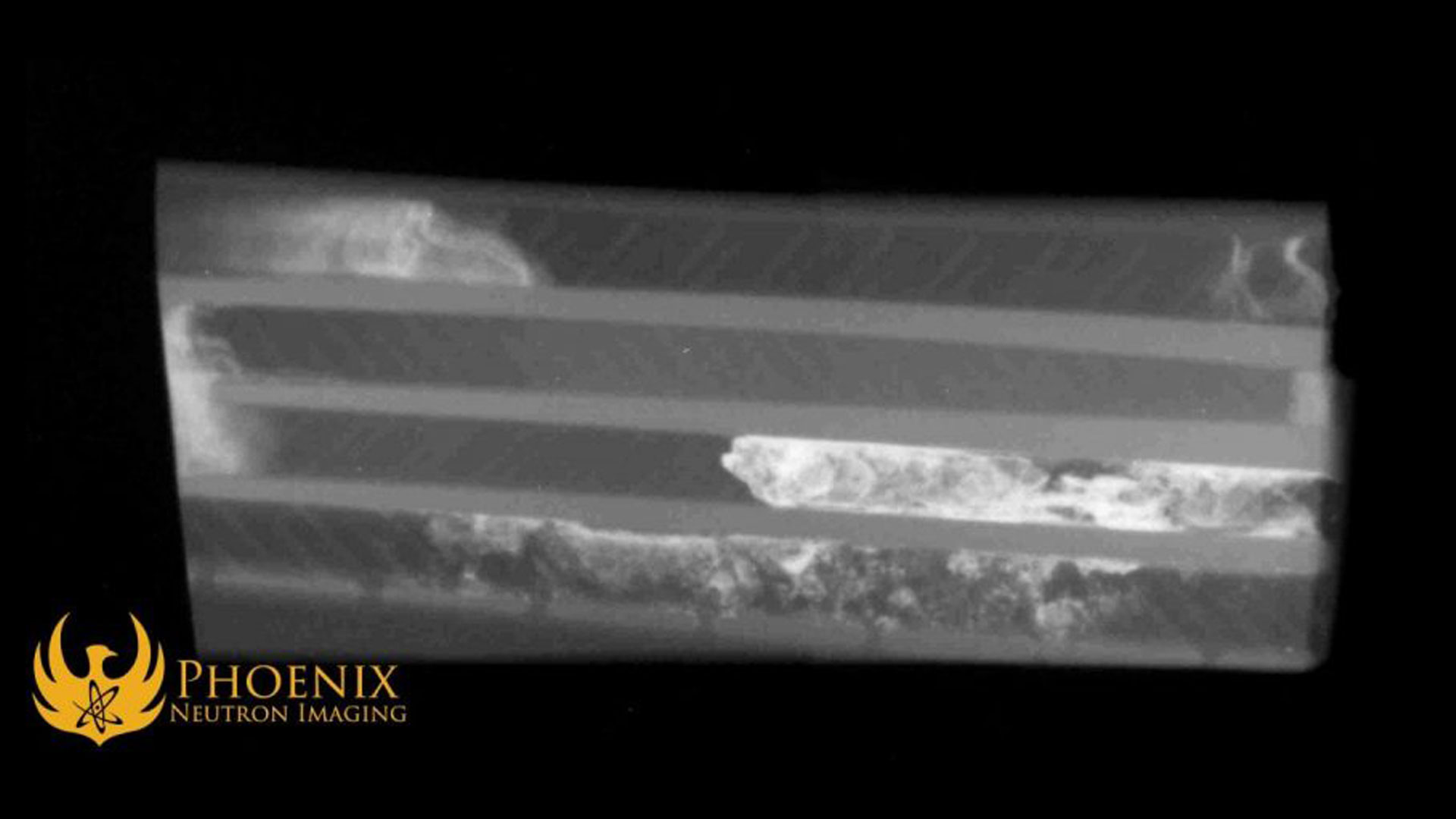
Neutron radiography is a nondestructive imaging method that reveals the internal structure of a sample by subjecting it to a neutron beam. Also known as neutron imaging or neutron tomography, neutron radiography can help manufacturers in a variety of industries — including aerospace and defense — design better, more efficient, and safer products, in addition to providing an invaluable resource for quality assurance and failure analysis.
Below, we’ll explore nondestructive testing and its various types, applications for neutron imaging, and more.
NonDestructive Testing vs. Destructive Testing
The main distinction between nondestructive testing and destructive testing is that nondestructive testing maintains the integrity and usability of the component.
Destructive testing results in either the component’s dismantlement or a change to the material’s physical and mechanical properties, rendering it unusable. For that reason, destructive tests are performed on small sample batches of the component. The downside to this approach? Flawed material may not be part of the chosen sample set, and can thus escape detection.
With nondestructive testing, all items in a batch can be tested — and not just a small, random set of samples. As a result, manufacturers of critical components can rest assured that they’ve done everything they can to ensure that all products leaving their facilities are safe and effective.
Types of NonDestructive Testing: X-Rays vs. N-Rays
Whether a radiographic test can create a useful image of a part’s interior depends on how the radiation interacts with the materials. The lighter a material, for example, the easier it is for X-rays to penetrate it. The denser a material, the more difficult it is for X-rays to penetrate it. This is why the X-rays you receive in a hospital or dental clinic pass through your flesh but not your bones, teeth, or any metal implants in your body.
The opposite is true when it comes to radiography using neutron radiation, or N-rays. N-rays can pass through dense material more easily than light material, making neutron radiography the better option when it comes to imaging items with dense outer shells and casings.
X-ray radiography is more common than N-ray radiography due to the ubiquity of and easy access to X-ray sources. However, as mentioned above, it has its disadvantages. We offer both X-ray and N-ray radiography at our imaging center, as well as other NDT radiography techniques (e.g. computed tomography) to best serve our clients.
The Best of Both Worlds: Fusing X-Ray & Neutron Radiography
X-ray radiography and neutron radiography are complementary, rather than competing NDT techniques. Since the two interact with materials in such different ways, both techniques can provide unique insights into a sample object’s composition and internal structure.
Fusing data from X-ray and neutron radiography is especially beneficial for understanding the inner workings of large, complex components. While neutron radiography has existed for decades, the practice of synthesizing neutron and X-ray images is woefully underexplored. After all, the average radiography facility has the capability for X-ray radiographs, but not neutron capabilities; likewise, the average reactor facility with neutron capabilities does not have X-ray capabilities. Since we have both neutron and X-ray imaging capabilities under the same roof, we’re in the best position to investigate and develop an X-ray/neutron radiography fusion.
NonDestructive Testing Applications
There are many applications in the nondestructive testing industry that neutron radiography is well suited for. Since neutrons can penetrate high-density material in a way that X-rays cannot, neutrons are widely used for critical aerospace components with thick outer shells, such as turbine blades and energetic fuses, which are difficult to inspect using X-ray radiography. N-rays can also be used to detect water and moisture within components, as well as archaeological specimens encapsulated in material that X-ray radiography cannot penetrate.
Other applications include:
- Detecting internal flaws in cast parts
- Detecting defects in energetic materials, including munitions
- Inspecting the internal structure of additively manufactured components
- Detecting the presence and position of liquids such as water inside dense metal and complex assemblies
- Finding evidence of corrosion inside metal pipelines
- Identifying bonding flaws in adhesives and disbonding of carbon fiber composites
- Inspecting concrete and welds for structural integrity
- Detecting corrosion, humidity, and water contamination in electronic components and mechanical structures
- Detecting and identifying the positions of o-rings, seals, lubricants, and adhesives inside complex assemblies
- Finding defects in silicon nitride ceramics
- Imaging the behavior of lubricating and cooling oils in refrigeration components
- Measuring the effectiveness of moisture-repelling agents
- Imaging the propagation of shockwaves in gaseous bodies
- Imaging the patterns and dynamics of fluid sprays
- Measuring the concentrations of boron in radiation shielding materials
Neutron tomography is presently underutilized in part because of a lack of accessible, high-intensity N-ray/neutron sources. Currently, these services are mainly supplied to the NDT community via a handful of neutron imaging-capable nuclear research facilities open for commercial use because only such facilities can supply enough neutrons for imaging. By developing a high-intensity neutron source that doesn’t rely on a reactor, we’re bringing newfound reliability and ease of access to this powerful testing method.










































